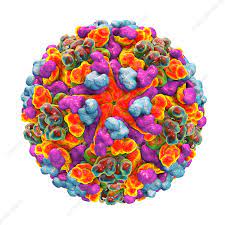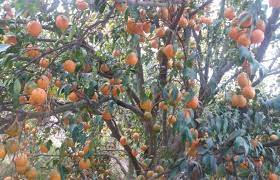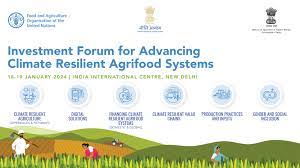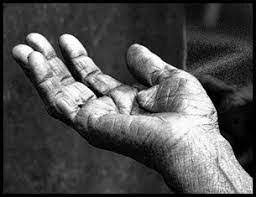Today’s Current Affairs: 30th Jan 2024 for UPSC IAS exams, State PSC exams, SSC CGL, State SSC, RRB, Railways, Banking Exam & IBPS, etc
Table of Contents
Dogri Folk Dance:

The Union Government of India conferred Padma Shri award to Jammu’s Dogri folk dancer Romalo Ram
- Dogri folk dance is a dance performed in Duggar region of Jammu.
- It is generally performed by a group of artists whose main leader sings the song as well as dances while others are in the sitting position providing beats of Drums and Chimta.
- It is performed in functions and social gatherings.
- There are other varieties of this dance with the men and women or only women performing dance in groups to the music of some famous folk song in colourful traditional dresses.
- Dogra folk-dances have an important role as a part of worship, ceremonies and a pastime but the main force behind the folk-dances is the celebratory mood.
- Other dance forms of Jammu region: Dheku, Phummani, jagran, Ckauki, Chhajja, Kuddha, Hirana etc. are the main dances. Bhagtan, Raas , Chandrauli etc. are main folk-drama styles.
Western Equine Encephalitis Virus:

The International Health Regulations National Focal Point (IHR NFP) in Argentina alerted the World Health Organization of a human case of Western Equine Encephalitis Virus (WEEV) infection.
- Western Equine Encephalitis Virus is a mosquito-borne infection caused by the Western Equine Encephalitis Virus (WEEV), which belongs to the Togaviridae family of viruses.
- The virus has an approximately 11.5 kilobases long single-stranded RNA genome.
- It is a recombinant of the eastern equine encephalitis virus (EEEV) and a Sindbis-like virus.
- Passerine birds are thought to be the reservoir and equine species as intermediate hosts.
- The primary mode of transmission of the infection to humans is through mosquitoes which act as vectors for the virus.
- Symptoms: While most of the infections are asymptomatic, the infection may lead to severe consequences in rare cases.
- An estimated 4-5% of cases may manifest as infection/inflammation of the brain, resulting in neurological symptoms and sequelae of disease.
- With no specific antiviral treatment, symptomatic care is crucial, especially for neurologic symptoms.
Nitrogen Hypoxia:

Alabama successfully executed a man who spent decades on death row using a new method called nitrogen hypoxia.
- Nitrogen hypoxia is a medical term for a state of insufficient oxygen in the body.
- It is a process where pure nitrogen gas, or nitrogen gas at concentrations high enough to be lethal, is inhaled to the point of causing asphyxiation.
- It is a relatively new alternative to more common forms of capital punishment, like lethal injection and electrocution.
- In this method of execution, a respirator mask is placed over the inmate’s face, and pure nitrogen is pumped into the person’s lungs instead of oxygen.
- It leads to unconsciousness and then death from lack of oxygen.
Kinnow Farming:

Kinnow growers in Punjab are apprehending losses this season as nearly half of the 13 lakh tonnes of the crop are yet to be harvested even as the season will end in less than two months.
- Kinnow Farming commonly pronounced as Kinoo or Kinu is a citrus fruit.
- It is a largely cultivated fruit of North India, and Punjab holds the major share of Kinnow / Mandarin producing area of the country, with other states including Rajasthan, Haryana, Madhya Pradesh, Himachal Pradesh, Jammu, and Kashmir.
- It is a hybrid of two varieties Citrus nobilis and Citrus deliciosa.
- It is commonly confused with Oranges, due to the similarity in their appearances, seasonal availability and nutritional benefits offered by both the fruits.
- It comprises a high amount of juice content, making them ideal for extracting juice and pulp.
- It can be grown successfully in a temperature range of 10-35°C.
- It has the ability to withstand soaring temperatures as high as 40°C during summer and 0°C during winter.
- Sites having well drained clay-loam soils with 6.0-7.5 pH are ideal for its cultivation.
- Rain: 300-400mm
Alpenglow:

Astronaut Lora O’Hara, currently stationed aboard the International Space Station, recently shared images showcasing the Alpenglow phenomenon near the Hindu Kush mountain range.
- Alpenglow is a natural phenomenon when mountain slopes are illuminated by the sun as it rises or sets.
- The slopes turn a rosy, reddish, or orange hue depending on the angle of the sun and atmospheric conditions.
- It occurs during the twilight hours before or after sunset. It can also occur in the first minutes after the sun rises or sets.
- Alpenglow typically occurs in the range of colours between red, pink, and orange.
- This is because these are the longest warm rays of electromagnetic waves (light) they reach various surfaces, while cold rays are shorter and disappear faster in the atmosphere.
- Its vibrancy and colour depend on the location of the sun, the angle of the light, and other atmospheric conditions like clouds, humidity, and particulates.
- It can change quickly depending on how fast the sun sets on any given day.
Investment Forum For Advancing Climate Resilient Agrifood Systems:

The National Institution for Transforming India (NITI Aayog), the Ministry of Agriculture and Farmers’ Welfare (MoA&FW) of the Government of India, and the Food and Agriculture Organization (FAO) of the United Nations jointly launched the ‘Investment Forum for Advancing Climate Resilient Agrifood Systems in India’ in New Delhi.
Investment Forum for Advancing Climate Resilient Agrifood Systems in India:
- The initiative aims to create an investment and partnership strategy fostering climate resilient agrifood systems among various stakeholders in India.
- The Forum facilitated discussions and deliberations on six key areas namely,
- Climate resilient agriculture (experiences and pathways).
- Digital infrastructure and solutions.
- Financing climate resilient agrifood systems (domestic and global).
- Climate resilient value chains.
- Production practices and inputs for climate resilience.
- Gender mainstreaming and social inclusion for climate resilience.
- Climate change has profound implications for India, particularly affecting its economically vulnerable rural population, largely dependent on climate-sensitive agricultural livelihoods.
- Agriculture contributes to about 13% of total greenhouse gas emissions in India and is vulnerable to the impacts of climate change.
- Indian agriculture is susceptible to extreme temperatures, droughts, floods, cyclones, and soil salinity.
- Climate change can affect crop yields, water availability, soil health, pest and disease outbreaks, and food security.
- Climate resilient agrifood systems can help mitigate and adapt to climate change, enhance food production, reduce poverty, and improve livelihoods.
- Climate mainstreaming into agrifood systems necessitates larger investments from global climate finance, domestic budgets, and the private sector.
3rd South Summit:

The 3rd South Summit was held in Kampala, Uganda, bringing together the members of the Group of 77 (G77) and China.
- The Third South Summit brought together the 134 members of the Group of 77 and China to boost South-South cooperation on trade, investment, sustainable development, climate change, poverty eradication, and digital economy, among other areas.
- The theme of the summit was “Leaving No One Behind.”
- The Group of 77 (G-77) was established on 15th June 1964 by signatories of the “Joint Declaration of the Seventy-Seven Developing Countries” issued at the end of the first session of the United Nations Conference on Trade and Development (UNCTAD) in Geneva.
- The G77 group has 134 members excluding China because the Chinese government does not consider itself a member, but rather a partner that provides political and financial support to the group. Although the group (G 77) mentiones China as its member.
- The Group of 77 is the largest intergovernmental organization of developing countries in the United Nations.
- It provides the means for the countries of the South to articulate and promote their collective economic interests and enhance their joint negotiating capacity on all major international economic issues within the United Nations system.
National Initiative To Rehabilitate Beggars At Religious, Historical And Tourist Sites:

The central government has identified 30 cities of religious, historical, and tourism significance across India for survey and rehabilitation of adults and children engaged in begging.
- The goal is to make these spaces free of beggary by 2026. More cities may be added over the next two years.
- This outreach in 30 cities is being implemented under the “Support for Marginalized Individuals for Livelihood and Enterprises” (SMILE) scheme by the Ministry of Social Justice and Empowerment.
- A national portal and mobile app will be launched to ensure uniform guidelines are followed for survey and rehabilitation. It will enable real-time tracking of progress in providing shelters, skills, education etc to those who beg.
- SMILE scheme launched in February 2022 with allocation of Rs. 365 crores from 2021-22 to 2025-26
- Beneficiaries: Transgender community and people engaged in begging
- The scheme aims to provide comprehensive welfare and rehabilitation measures to the transgender community and people engaged in begging through various interventions like education, skilling, health, protection and mainstreaming.
Nitish Kumar : CM 9th Term

Janata Dal (United) president Nitish Kumar was sworn in as the Chief Minister of Bihar for the record ninth time on August 10, 2022.
- He returns to power just 18 months after leaving the BJP-led NDA, in his fifth such switch since 2015.
- Six ministers and two Deputy CMs from BJP also took oath.
- Nitish claimed the move was “in Bihar’s interest”, while the BJP called it necessary “for the state’s development”.
- However, previous alliance partner RJD predicted JD(U)’s demise as a party from the break-up, despite having tied up over ideological compatibility earlier.
- Since 2005, Nitish has continually changed political loyalties to remain CM barring 2014-15.
- He has partnered with BJP thrice earlier and with RJD twice.




